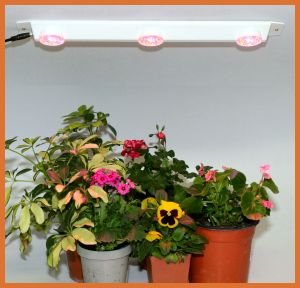These new Far-Ultraviolet (FUV) leds are great news for the many in the Bio Industries:
A joint research group led by Japan's Institute of Physical and Chemical Research (Riken) and Saitama University developed a UV-LED with an emission wavelength as short as 227.5 nm and an output of 0.15 mW.Thus far, another research group has reported the development of a UV-LED with an emission wavelength of 210 nm, but its output was only 0.02 μW. In addition to the prototype unveiled this time, the research group of Riken and Saitama University succeeded in prototyping UV-LEDs with a wavelength of 253 nm and an output of 1 mW, 261 nm and 1.65 mW, and 273 nm and 3.3 mW.
According to the group, the outputs of these UV-LEDs are substantially equivalent to those of blue, red and white LEDs used in electric lamps. And the outputs are on a level such that these UV-LEDs can be used as-is in germicidal lamps.
With a view to applications for sterilization, water purification, medical care and the high-speed degradative treatment of pollutants, etc., the research group intends to further enhance the efficiency and output of its latest UV-LED.
The prototype UV-LED uses an AlGaN semiconductor. The UV-LED was obtained by first forming an ALN layer on a sapphire substrate, and then forming an n-type AlGaN layer, AlGaN emitting layer (triple quantum well structure), p-type AlGaN layer, etc. stacked on one another by crystal growth.
The research group upgraded the crystal growth method of the AlN layer provided on the sapphire substrate to enhance the output. According to the new method, multiple AlN layers are formed by alternately using two different growth methods.
First, an AlN layer is formed by continuously supplying the Al material while intermittently supplying (i.e. supplying in a pulsed manner) ammonium gas. Then, another AlN layer is formed by continuously supplying both the Al material and ammonium gas.
This crystal growth method is called the Ammonia pulsed supply multiple layer growth method. The method resulted in (1) a decrease of threading dislocation density in the AlN crystals, (2) an increase in flatness of crystal layers and (3) a reduction of cracks due to the distortion in the crystals.
Because the quality and flatness of the AlN layer was improved, other layers formed on the AlN layers also resulted in higher quality and flatness, thereby enhancing the emission intensity (output) from the AlGaN emitting layer. The emission intensity was increased to approximately 50 times that obtained by the existing AlN layer formation method.
The latest UV-LED was an achievement by Hideki Hirayama, the head of Terahertz Quantum Device Laboratory, Terahertz-wave Research Program, Frontier Research System of Riken, and Norihiko Kamata, professor of graduate school of science and engineering, Saitama University.




No comments:
Post a Comment